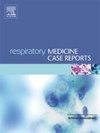鼻高频振荡通气在重度支气管肺发育不良早产儿中的作用
IF 0.7
Q4 RESPIRATORY SYSTEM
引用次数: 0
摘要
为了防止支气管肺疾病(BPD)的恶化,早期拔管是可取的。然而,在极早产儿中,BPD往往变得严重,使早期拔管困难并导致插管时间延长。即使插管时间延长,在重度BPD慢性期的极早产儿拔管时可行的呼吸策略也是必要的。在早产儿中,鼻高频振荡通气(NHFOV)可以在出生后立即支持拔管后的呼吸,但在极早产儿重度BPD慢性期,NHFOV是否有效作为拔管后的呼吸支持尚不清楚。特别是对于极度早产或出生体重极低的婴儿,早期拔管是困难的。虽然在长期呼吸机支持期间,这类婴儿的经后年龄和体重有所增加,但由于呼吸机对肺部造成的严重损伤,与与经后年龄相当的胎龄早产儿相比,其呼吸功能非常差。因此,在BPD的慢性期拔管也可能具有挑战性。在本报告中,我们描述了一例在妊娠23周时出生的体重为374 g的勉强存活婴儿,由于严重的BPD,出生后需要插管2个月,并成功地使用NHFOV拔管。本病例报告提示,NHFOV可能是极低出生体重婴儿严重BPD的有效呼吸策略。本文章由计算机程序翻译,如有差异,请以英文原文为准。
Role of nasal high-frequency oscillatory ventilation in a premature infant with severe bronchopulmonary dysplasia
To prevent the worsening of bronchopulmonary disease (BPD), early extubation is desirable. However, in extremely preterm infants, BPD tends to become severe, making early extubation difficult and leading to prolonged intubation. Even if the intubation period is prolonged, feasible respiratory strategies for extubation in extremely preterm infants during the chronic phase of severe BPD are necessary. In preterm infants, nasal high-frequency oscillatory ventilation (NHFOV) can support breathing after extubation immediately after birth, but whether NHFOV is effective as respiratory support after extubation in the chronic phase of severe BPD in extremely preterm infants is unclear. Especially for extremely preterm births or infants with extremely low birth weights, early extubation is difficult. Although such infants' postmenstrual age and weight increase during long-term ventilator support, their respiratory function is very poor compared with that of preterm infants born at a gestational age equivalent to such infants' postmenstrual age owing to substantial lung damage caused by the ventilator. For this reason, extubation in the chronic phase of BPD may also be challenging. In this report, we describe a case of a marginally viable infant who was born at 23 weeks’ gestation weighing 374 g, required 2 months of intubation after birth owing to severe BPD, and was successfully extubated using NHFOV. This case report suggests that NHFOV may be an effective respiratory strategy for very low birth weight infants with severe BPD.
求助全文
通过发布文献求助,成功后即可免费获取论文全文。
去求助
来源期刊

Respiratory Medicine Case Reports
RESPIRATORY SYSTEM-
CiteScore
2.10
自引率
0.00%
发文量
213
审稿时长
87 days
 求助内容:
求助内容: 应助结果提醒方式:
应助结果提醒方式:


